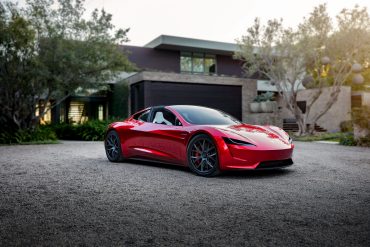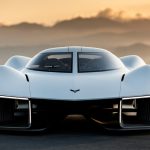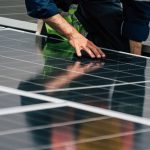
- Mobility Tech
Tesla China Sales Rise in June, Ending Eight-Month Decline
5 minute read

Tesla EV sales show slight recovery in China as automaker faces mounting pressure from domestic competitors like BYD
Key Takeaways
- Tesla China sales rise 0.8% in June to 71,599 units, ending an eight-month decline streak amid intensifying competition from domestic rivals like BYD and Xiaomi.
- Q2 deliveries still down 10.9% year-over-year with analysts projecting Tesla’s global sales could decline 6% in 2025, marking the second consecutive annual drop.
- Strategic pivot to V4 Superchargers and Robotaxi represents Tesla’s long-term bet on autonomous mobility services with potential $1 trillion market opportunity by 2030.
Introduction
Tesla’s China operations delivered their first monthly sales increase in eight months, rising 0.8% year-over-year to 71,599 units in June. The modest rebound marks a potential turning point for the electric vehicle giant’s performance in the world’s largest EV market.
According to Investing.com, data from the China Passenger Car Association shows deliveries of Model 3 and Model Y vehicles from Tesla’s Shanghai factory jumped 16.1% compared to May. The figures encompass both domestic Chinese sales and exports to Europe and other regions.
Key Developments
Tesla’s June performance showed strong momentum in the final week, with domestic registrations soaring to 20,680 units—a 49% weekly jump and 46.7% year-over-year improvement. The refreshed Model Y drove much of this growth, delivering 15,210 units in its highest weekly tally since launch.
The company implemented strategic pricing adjustments and minor design updates to stimulate demand. Tesla introduced a $2,000 price hike for the long-range Model 3 while keeping Model Y pricing steady, balancing production costs with market competitiveness.
Despite June’s uptick, broader quarterly trends remain challenging. Second-quarter deliveries fell 4.6% quarter-over-quarter and 10.9% year-over-year, with Shanghai factory exports slipping 22.4% month-over-month in May.
Market Impact
Tesla’s modest recovery contrasts sharply with competitor performance in China. BYD reported 11% year-over-year growth in June global sales, reaching 377,628 units and significantly outpacing Tesla’s growth rate.
New market entrants pose additional pressure. Xiaomi’s YU7 electric SUV generated 200,000 firm orders within three minutes of its June 26 launch, securing over 240,000 locked-in orders within 18 hours. The vehicle’s $23,000 price point directly challenges Tesla’s Model Y positioning.
Tesla’s market share in China stands at 7.5% compared to BYD’s commanding 33.8% in 2023, highlighting the competitive landscape’s intensity. First-half 2024 sales of 364,474 vehicles represent a 14.57% decrease from the previous year’s 426,623 units.
Strategic Insights
Tesla’s recovery strategy centers on two transformative initiatives: V4 Supercharger network expansion and Robotaxi program development. The V4 rollout now operates in four Chinese cities with 500-kW charging capability, reducing recharge times to 15 minutes for 200 miles of range.
The company’s Austin-based Robotaxi pilot achieved its first fully autonomous delivery without human intervention, signaling progress toward CEO Elon Musk’s goal of scaling the fleet to hundreds of thousands of vehicles by year-end.
Tesla’s vertically integrated model—from battery production to software—provides cost control advantages and rapid product iteration capabilities. However, the company increasingly relies on lower-margin vehicles and aggressive financing incentives to maintain sales volume.
Expert Opinions and Data
Industry analysts project Tesla’s 2025 global sales could decline 6% year-over-year, marking the second consecutive annual drop. The projection reflects sustained demand challenges across multiple markets, with European sales falling 27.9% year-over-year in May.
Bulls argue Tesla’s strategic pivots could unlock a $1 trillion robotics ecosystem, potentially justifying stock price targets of $2,600 by 2030. The company’s focus on autonomous driving technology and charging infrastructure positions it as both automotive manufacturer and technology innovator.
However, skeptics note Tesla’s current P/E ratio of approximately 175 appears elevated for a company facing execution uncertainties and delivery volatility. The reliance on temporary incentives and price cuts raises questions about sustainable profitability in competitive markets.
Conclusion
Tesla’s June sales rebound in China provides tentative optimism but occurs against a backdrop of intensifying competition and structural market challenges. The company’s strategic pivot toward autonomous mobility services and charging infrastructure represents a long-term growth bet requiring successful execution amid regulatory and technical hurdles.
The modest recovery underscores Tesla’s resilience while highlighting the fragile nature of its momentum in the world’s most important EV market. Success depends on converting prototype initiatives into scalable realities while maintaining competitive positioning against rapidly advancing domestic rivals.








